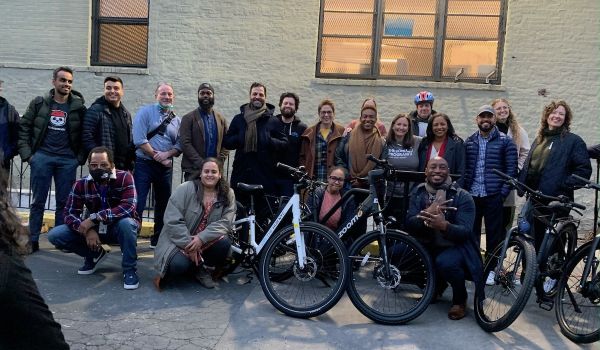During the pandemic, children in Palm Beach County, Florida, were flocking to fast food restaurants and library steps. Not to hang out, but to connect to the internet so they could participate in their remote classrooms.
“It was terrible,” says Gregg Weiss, Palm Beach County Commissioner for District 2.
This wasn’t unique to Palm Beach kids, nor was it unique to COVID-19. The U.S. had been grappling with a lack of internet access for years, an issue that Weiss and his fellow telecom and technology committee members for the National Association of Counties (NACo) wanted to fix.
At the committee’s behest, NACo wrote a report about the “true state of connectivity” in the U.S. in March 2020. They discovered that the Federal Communications Commission’s (FCC) maps of broadband service across the country were “inaccurate and inflated.” This is because the map’s data came only from internet service providers, who would mark an entire census block as “served” with broadband, even if just one home had coverage.
To fill in these data gaps, NACo then built TestIT, a mobile app that uses crowd-sourced, real-time information to track broadband connectivity access and speeds across America. They accomplished this through a number of key partnerships, including with a CDFI, the Rural Local Initiatives Support Corporation, as well as Rural Community Assistance Partnership, National Association of Development Organizations, Farm Credit and Land O’Lakes.
TestIT allows users to press a button to test and compare their internet speeds to the federal minimum broadband standards (25 megabytes per second). TestIT can also log connectivity tests conducted in areas with no broadband accessibility once the user is back in range by updating the test’s geolocation. This means that the app can get a very clear picture of where broadband is not available in the country — and help counties fill in those gaps.
“If it’s a lack of actual infrastructure or if it’s a need for providing some type of support or navigators to help bring the level of utilization up, these maps are going to help us identify these areas,” Weiss says.
Through TestIT’s 200,000 crowd-sourced tests across the country, NACo discovered that over half of America’s counties were, on average, experiencing internet speeds below the national minimum broadband standards.

In July 2020, the summer after TestIT was launched, congress codified The Broadband DATA Act, which requires the FCC to revamp how it collects broadband connectivity data. The Act requires the FCC to use third-party and granular broadband data, alongside the internet service providers’ data, to gather a more accurate picture of broadband service and accessibility across the country.
Thanks to the Act, the FCC is currently wrapping up its two-year process of broadband data collection for these new maps; drafts came out in November.
TestIT will be submitting its own crowdsourced data to the FCC as a third-party provider, in order to make the maps even more accurate, says Seamus Dowdall, Associate Legislative Director at NACo, and part of the TestIT launch team.
“We’ve really seen counties step up to the challenge,” Dowdall adds. “TestIT is something we’re very proud of.”
Yet, cities and counties are still relatively powerless to combat corporate internet service providers’ high internet prices. This is because municipally-owned broadband networks are prohibited in many states. Dowdall was encouraged to see the federal Bipartisan Infrastructure Bill’s commitment to lowering internet service prices, which could empower counties to help residents access more affordable broadband.
Despite battling restrictions, some cities are still finding unique ways to provide affordable high-speed internet. Colorado Springs is taking steps toward hosting the country’s first true open-access community fiber network. The network will be privately funded and has a target completion date of 2028. In 2021, NYC announced an $157 million budget to roll out its first Internet Master Plan. And a Chattanooga, Tennessee, program offers free high-speed internet access to low-income students.
There’s also the FCC’s Affordable Connectivity Program which helps eligible households receive up to $30 off their internet service bill during the pandemic. But there is speculation that this program will end soon.
“It’s one that NACo and counties have really been pushing on to residents as much as possible,” Dowdall says. “NACo really hopes to see that program become permanent.”
Fall 2022’s new FCC broadband maps will be an enlightening look into the state of connectivity in the U.S. NACo hopes that new data will push federal agencies and cities to mobilize even more to mend the digital divide.
“The county role in broadband cannot be more important nowadays,” Dowdall says. “From a local and community decision-making perspective … communities understand the state of their connectivity best.”

This story is part of our series, CDFI Futures, which explores the community development finance industry through the lenses of equity, public policy and inclusive community development. The series is generously supported by Partners for the Common Good. Sign up for PCG’s CapNexus newsletter at capnexus.org.
Sabina Wex is a writer and podcast producer in Toronto.




_920_614_600_350_80_s_c1.jpg)
_600_350_80_s_c1.jpg)
_600_350_80_s_c1.jpg)









